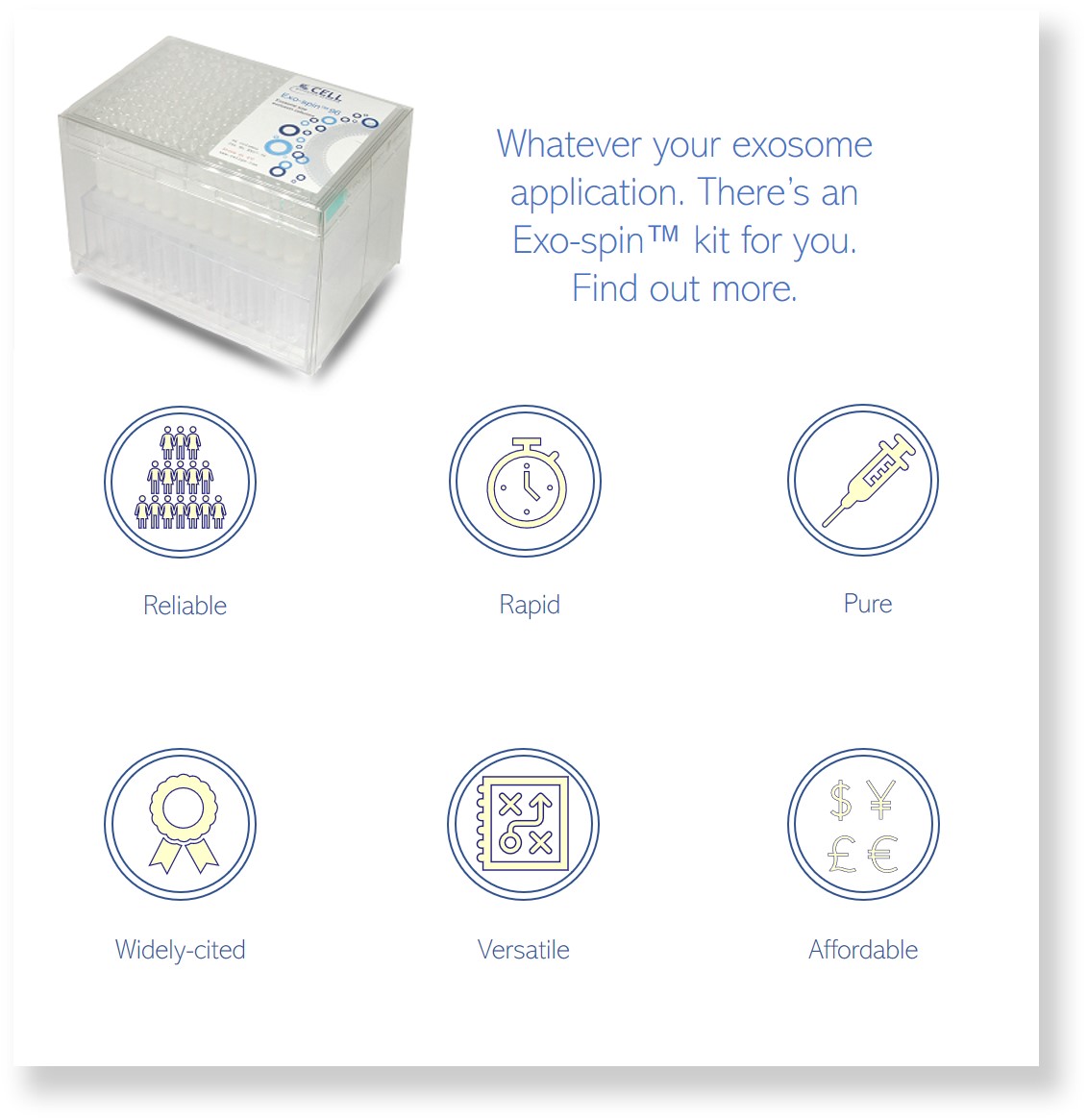Exosomes for targeted doxorubicin chemotherapy

Cancer causes 10 million deaths each year throughout the world. Chemotherapy, using chemicals that are particularly toxic to rapidly dividing cancer cells, is the most commonly used treatment, often in combination with surgery and/or radiotherapy.
Whilst effective, chemotherapy has several disadvantages: The limited ability of chemicals to pass biological barriers and lack of tissue specificity means localization of chemotherapeutics at the tumor site is inadequate and efficacy poor. That’s why repeated systemic administration of these highly toxic drugs is necessary. This repeated administration not only has the potential to drive therapeutic resistance, but each round also causes numerous side-effects, ranging from nausea and vomiting to more serious conditions such as cardiomyopathy. This risk of cardiomyopathy can particularly hinder the effectiveness of particular chemotherapeutics, imposing restrictions on the amount of drug that a patient can receive. Novel treatment methods to circumvent these side effects by more specifically targeting tumor tissue are being developed.
Exosomes have particular potential for chemotherapeutic delivery. Exosomes are nanovesicles, ranging from 30-150 nm in size, which are secreted by cells. They carry a wide array of cargo from the cells which produced them, including DNA, RNA and proteins, and thus are known to play a critical role in intercellular communication. So, it’s not surprising that there is significant interest in using them to shuttle anti-cancer drugs. Their biological origin means that exosomes potentially confer very little immunogenicity and cytotoxicity in vivo, whilst they are also able to cross biological barriers, such as the blood-brain barrier. Moreover, their outer membrane provides an added layer of protection to their cargo, prolonging its time in circulation.
A recent publication by collaborating groups at North Carolina State University, the University of North Carolina, and Hebei Medical University and Zhengzhou University investigated the use of tumor-derived exosomes as vectors for chemotherapeutics. Vast numbers of exosomes are secreted by tumor cells and are known to play a role in metastasis formation, angiogenesis and therapeutic resistance, amongst other things. This study reported that such exosomes are capable of targeting their parent-cell. This homotypical targeting provides a specific method of delivering chemotherapeutics to tumors, with the potential for reducing chemotherapy-associated side-effects.
The researchers focussed on Doxil, a liposome-encapsulated form of doxorubicin that has no specific targeting capabilities and is used in the treatment of solid tumours, which they encapsulated within exosomes isolated from both HT1080 sarcoma cells and HeLa cervical cancer cells. They systemically injected HT1080 tumor-bearing nude mice with both types of Doxil-carrying exosome, as well as nude Doxil, over a 15-day period. Their results show tumor suppression was significantly greater in mice treated with Doxil-carrying HT1080-derived exosomes. This not only demonstrated the capability of tumor-derived exosomes to successfully deliver chemotherapeutic drugs to the tumor site but also to specifically target their parent cell-type.
Doxil accumulation was also reduced substantially in non-target organs, including the heart, when compared to treatment with naked Doxil. This suggests that targeted exosome-drug delivery may have the potential to circumvent the cytotoxicity and dose-limitations currently imposed by chemotherapeutics.
The researchers also examined the mechanism of exosome uptake. Whilst this has not been clearly defined, it was already known that lipid mixing between the exosome and tumor cell membrane is involved. It was also known that interactions between exosomal integrins and extracellular matrix (ECM) proteins on specific target cells is necessary for exosomal uptake. In this study, they used proteomic array analysis of HT1080 tumor cells and their exosomes. This showed that several of the same integrins are expressed on the surface of both. As integrins are selectively packaged by exosomes, the integrins carried by cells and the exosomes they produce are not necessarily identical. This suggested that integrin expression patterns may play a key role in the homing capabilities of tumor-derived exosomes.
One major hurdle of using exosomes therapeutically is the inability to isolate large volumes, as well as a lack of uniformity between isolated exosomes. Whilst no tumor formation was reported in distant organs following 15 days of treatment during this study, given their role in metastasis, it seems unlikely that tumor-derived exosomes would ever be used therapeutically.
As an alternative to cell-based production, many researchers have turned their efforts toward engineering exosome-mimetic nanoparticles. One approach involves cloaking a polymeric nanoparticle core with a cancer cell membrane. This method exploits the adhesive nature of cancer cells, with the membrane possessing the specific receptors required to target tumor cells. Based on the information revealed in this publication, cloaking such nanoparticles with tumor-derived exosome membranes may further enhance their targeting capabilities and provide optimal biocompatibility, whilst possessing none of the metastatic capabilities of the complete exosome.
IMAGE: Shutterstock

